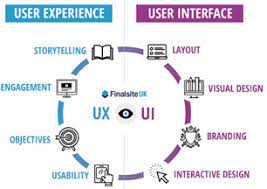User Interface (UI) design is the art of crafting digital interfaces that bridge the gap between users and technology.
It plays a pivotal role in shaping how users interact with websites, applications, and software. In this article, we will delve into the significance of User Interface (UI) design and explore how it enhances user experience, fosters engagement, and drives business success.
The Essence of User Interface (UI) Design
User Interface (UI) design refers to the visual and interactive elements that users encounter when navigating a digital platform.
It encompasses layout, buttons, icons, typography, color schemes, and all other elements that facilitate user interactions.
The goal of UI design is to create an aesthetically pleasing and intuitive interface that allows users to accomplish tasks efficiently and enjoyably.
Designing for User-Friendliness
User-friendliness lies at the heart of UI design. Intuitive interfaces guide users through the digital journey with ease, eliminating confusion and reducing the learning curve.
By organizing elements in a logical manner and providing clear feedback, designers can ensure that users understand the interface effortlessly.
Consistency and Brand Identity
Maintaining consistency across the UI fosters a sense of familiarity and comfort for users. A cohesive design language with consistent visual elements, colors, and typography reinforces brand identity and strengthens the connection between users and the brand.
Consistency is particularly crucial when dealing with multi-platform experiences to ensure a seamless transition between devices.
Responsiveness and Adaptive Design
In an era where users access digital content on various devices, including desktops, smartphones, and tablets, responsive and adaptive design is indispensable.
UI designers must create interfaces that dynamically adjust to different screen sizes and resolutions, providing a consistent experience across all platforms.
Visual Hierarchy and Information Architecture
A well-organized visual hierarchy guides users’ attention and highlights essential elements on the interface.
Properly structured information architecture helps users quickly find what they need and understand the relationships between different pieces of information. This clarity improves usability and overall satisfaction.
Feedback and Interactivity
Incorporating interactive elements, such as buttons, sliders, and animations, creates a dynamic and engaging user experience.
Providing immediate feedback to user actions helps reinforce their understanding of the interface and ensures that they feel in control of their interactions.
Accessibility and Inclusivity
UI design should be accessible to all users, regardless of their abilities. Designers must consider accessibility guidelines and cater to users with disabilities to ensure everyone can use and benefit from the digital platform.
Aesthetics and Emotional Impact
Beyond functionality, UI design influences users on an emotional level. Thoughtfully chosen colors, imagery, and visual elements can evoke specific feelings and create a memorable experience.
Aesthetically pleasing designs leave a positive and lasting impression on users, leading to increased brand loyalty.
Conclusion
User Interface (UI) design is a crucial component of creating successful digital experiences. By prioritizing user-friendliness, consistency, responsiveness, and interactivity, designers can craft interfaces that resonate with users and foster meaningful engagements.
A well-executed UI design not only enhances user experience but also reinforces brand identity, drives customer loyalty, and contributes to the overall success of digital products and services.
As technology continues to evolve, UI design will remain a powerful tool for businesses and organizations seeking to create impactful and delightful digital journeys for their users.

